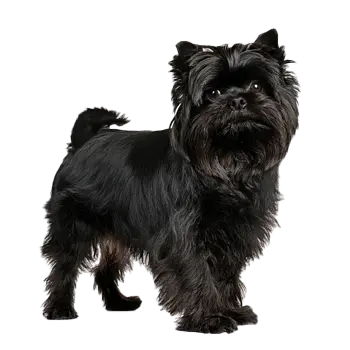The Monkey Dog exhibits a behavioral profile that perfectly balances confidence with affection, creating a companion that is both entertaining and deeply loyal. These dogs possess an almost human-like ability to read situations and respond appropriately, demonstrating intelligence that often surprises people unfamiliar with the breed. Their curious nature drives them to investigate everything in their environment, from new sounds and smells to changes in routine or the arrival of strangers. This inquisitive behavior, combined with their excellent memory, makes them quick learners who retain training well but also means they can become bored easily with repetitive activities.
One of the most distinctive behavioral characteristics of the Monkey Dog is their fearless attitude toward much larger dogs and even potential threats. Despite their toy size, they display the courage of a much larger breed, often challenging dogs ten times their size without hesitation. This behavior stems from their working heritage as ratters, where fearlessness was essential for survival, but it requires careful management in modern settings to prevent the dog from getting into dangerous situations. Owners must be vigilant during interactions with larger dogs and teach their Monkey Dog appropriate boundaries.
Social behavior in Monkey Dogs tends to be somewhat discriminating, as they typically prefer the company of their family members to that of strangers. They often form particularly strong bonds with one or two family members while remaining friendly but somewhat aloof with others. This selective affection makes them excellent personal companions but requires early socialization to ensure they remain polite with visitors and strangers. Their natural wariness of unfamiliar people makes them excellent alert dogs, as they will reliably announce the arrival of anyone new to their territory.
The breed's energy levels fluctuate throughout the day, with periods of intense activity alternating with times of calm relaxation. During their active periods, Monkey Dogs display playful, often mischievous behavior that can be both entertaining and challenging for their owners. They enjoy games that engage their minds as well as their bodies, showing particular enthusiasm for activities that allow them to use their problem-solving abilities. However, they are equally content to spend quiet time near their favorite people, making them adaptable to various lifestyle patterns.
Territorial behavior represents a significant aspect of the Monkey Dog's personality, as they take their guardian role seriously despite their small size. They will patrol their home environment, checking for changes or potential threats, and may become possessive of their favorite spots, toys, or even their family members. This territorial instinct can lead to resource guarding behaviors if not properly managed, making it important for owners to establish clear rules and boundaries from an early age.
Communication behaviors in Monkey Dogs are quite sophisticated, as they use a variety of vocalizations, body language, and facial expressions to convey their needs and emotions. Their expressive faces allow them to communicate with almost human-like clarity, while their vocal repertoire includes different barks, whines, and grumbles for various situations. They are generally not excessive barkers but will use vocalization strategically to get attention, alert to visitors, or express excitement or frustration.
The breed's hunting instincts remain strong and can manifest in various ways, from chasing small animals and insects to intensely focused stalking behaviors when they detect interesting scents or sounds. These behaviors are normal and healthy expressions of their heritage, but owners should be aware that Monkey Dogs may not be suitable for households with small pets like hamsters, birds, or ferrets that could trigger their prey drive. Early socialization with cats and other pets can help, but the instinct may always remain dormant.
Training behavior in Monkey Dogs reflects their intelligence and desire to please, but also their independent nature and occasional stubbornness. They learn quickly when motivated but may choose to ignore commands if they find something more interesting or if training becomes too repetitive. Successful training requires creativity, consistency, and positive reinforcement methods that engage their minds while establishing clear leadership. They respond particularly well to training that feels like games or problem-solving activities rather than drill-style repetition.
Stress behaviors in Monkey Dogs often manifest as excessive vocalization, destructive chewing, or attention-seeking activities when they feel anxious or understimulated. They may also develop separation anxiety if not properly conditioned to alone time, as their strong family bonds can make extended isolation distressing. Preventing stress-related behaviors requires ensuring adequate mental stimulation, regular exercise, and gradual conditioning to help them develop confidence and independence when necessary.

